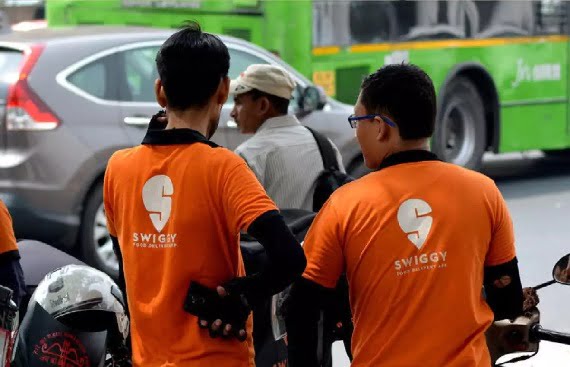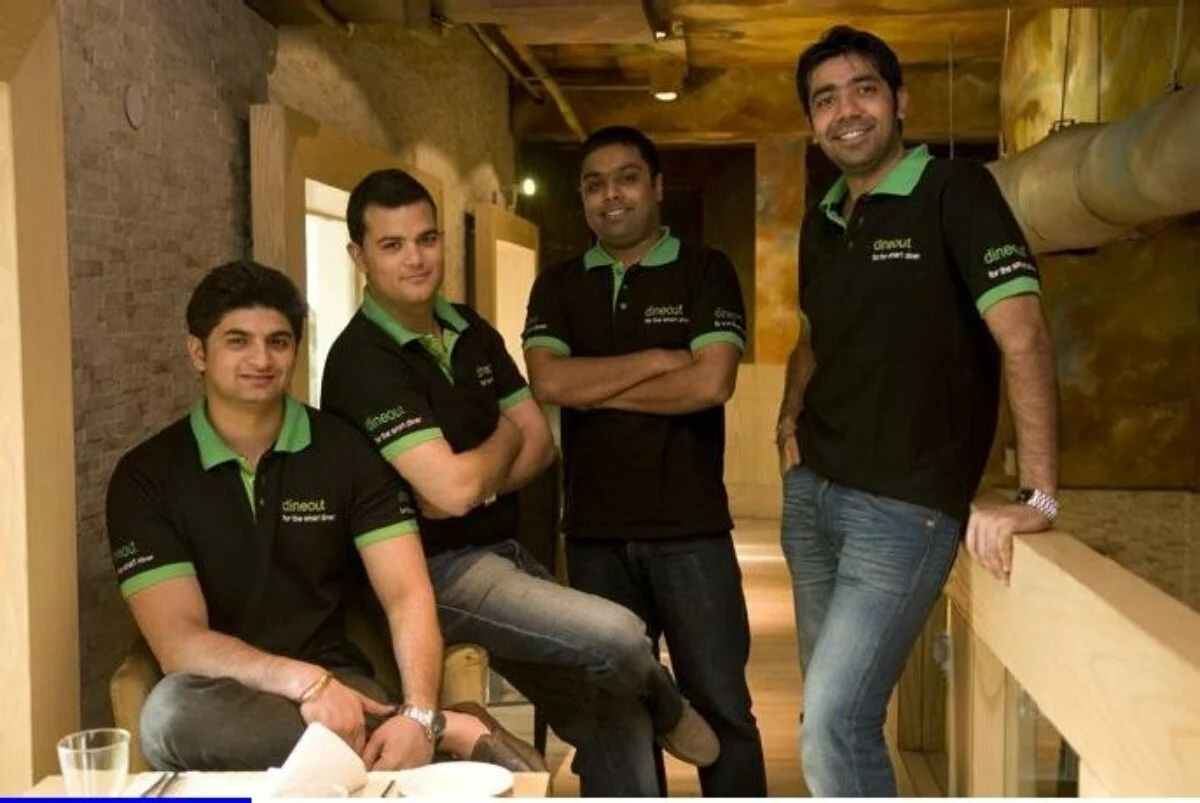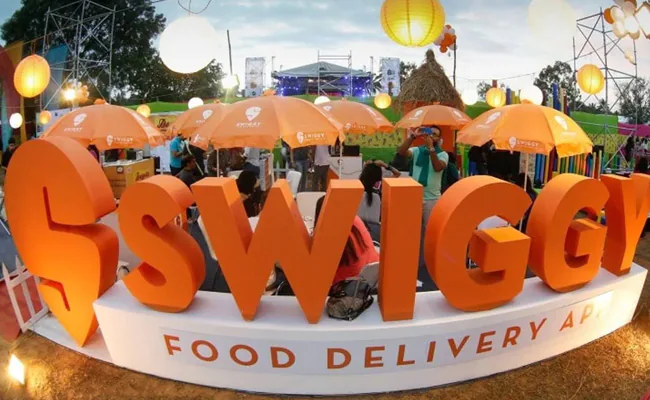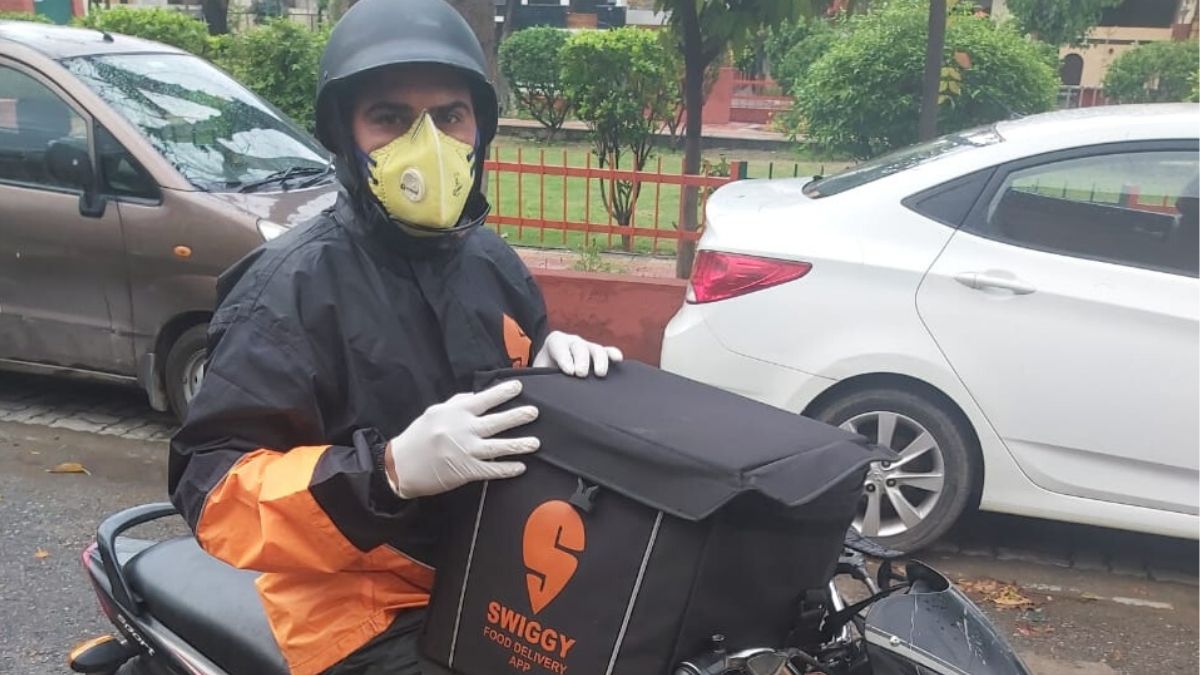Swiggy enters the high-end dining market with the $200 million acquisition of Dineout

Swiggy enters the high-end dining market with the $200 million acquisition of Dineout
Swiggy, an online meal delivery service, announced on Friday that it had paid an undisclosed amount for Dineout, eating out, and restaurant technology platform.
The acquisition could cost around $200 million, according to reputable sources.
Following the acquisition, Dineout will continue to function as a separate app, with 50,000 eateries in 20 cities serving millions of consumers.
“Times Internet and the founding team should be recognised for the transformational impact they have brought about in the dining out experience with their products, technology, and a wide variety of restaurant partners,” said Sriharsha Majety, Swiggy’s CEO.
Dineout’s founders will join Swiggy following the acquisition.
According to Majety, Swiggy will be able to study synergies and provide new experiences in a high-use sector due to the acquisition.
Ankit Mehrotra, Nikhil Bakshi, Sahil Jain, and Vivek Kapoor created Dineout in 2012 to assist clients in finding the best restaurants, making reservations, and taking advantage of discounts and privileges at specific restaurants.
The partnership will also benefit Swiggy’s restaurant partners, as it would help them reach more customers and increase their business.
“Thanks to Swiggy’s excellent grasp of the ecosystem and our shared desire for a superior consumer and restaurant experience, our combined resources will assist in delivering a holistic platform in this market,” said Mehrotra, Co-founder and CEO of Dineout.
In the last 20 months, Swiggy has expanded Instamart, its quick commerce grocery delivery service, to 28 locations and Genie, its pick-up and drop service, to 68 cities.
The meal delivery network connects customers to over 1,90,000 restaurant partners and businesses in over 520 cities.

About Dineout
Food can help you socialise and bond while also increasing your serotonin levels. Who doesn’t relish the opportunity to go out and sample beautiful foods, whether alone after a long day or with friends for lunch on a long-awaited weekend?
Because dining out is such a significant event, aspects such as the establishment’s decor, the quality of the cuisine, and the whole dining experience must be meticulously planned. However, we regularly return to the same dining venues on new occasions, partially to save time and effort in searching for new establishments, resulting in us losing out on a variety of fantastic dining options flooding our neighbourhoods.
Another impediment to dining out is the time and effort required to reserve a table at our preferred restaurants, either because they are fully booked in advance or because we failed to coordinate with the restaurant on time and the long wait time—Dineout. This service aims to make the entire process easier. Making reservations and choosing restaurants is no longer a headache while dining out, is working on a solution to these issues.
Dineout is an online table reservation service designed to help consumers identify the most suitable restaurants in their neighbourhood and make reservations as quickly as possible.
The platform was founded in 2012 by Ankit Mehrotra, Nikhil Bakshi, Sahil Jain, and Vivek Kapoor. Since its inception, Dineout has continued to improve the services it provides. Along with assisting clients in selecting suitable restaurants, the website offers a variety of other services that efficiently attract users. The platform gives users access to special offers at over 40,000 restaurants around the country.
Dineout connects clients with the best cafes and restaurants in the city. They also offer a cashless payment option across all locations, allowing consumers to earn rewards on every bill. Customers who use these services can save about 30% more than those who use traditional restaurants. The Gourmet Passport, an exclusive programme offered by the site, provides a number of incentives to foodies.
The way the platform leverages data to determine what the user wants and then make relevant recommendations is one aspect that sets it apart from the competitors.
The cuisine is chosen, the amount of the meal purchased, the time of day/week/month the user goes out to eat, restaurant offers, and bookings are all taken into account.
“It’s a long and laborious path where a customer examines many restaurants on different platforms, consults friends or family, and then decides where to go. That is a major issue that the Dineout is attempting to address.”
– Dineout Cofounder Sahil Jain to Economic Times

Founders of Dineout
Ankit Mehrotra, Vivek Kapoor, Nikhil Bakshi, and Sahil Jain launched Dineout.
• Ankit Mehrotra, the platform’s principal founder and CEO, started the company in early 2012. Ankit began his career as a financial analyst at BNP Paribas. In 2011, he earned a bachelor’s degree in Computers and Telecommunications Engineering from the University of Essex. He completed his schooling at CFA Institute after that.
• Vivek Kapoor, a former chief officer, is a co-founder of Dineout. He was previously the chief officer of British Petroleum for four years. He finished his education at Modern School in 2002.
• Nikhil Bakshi is a co-founder of Dineout. He was the manager at DSP BlackRock Mutual Fund before joining Dineout. He earned his bachelor’s degree in commerce from Delhi University.
• Sahil Jain is another one of Dineout’s founders. He began his career with Sasken Communication Technologies Ltd as a Software Engineer. He worked at Mu Sigma as a Senior Business Analyst and Associate Manager. He had also worked for Nextag as a Senior Market Analyst for less than a year.
The Origin of Dineout
Dineout was born out of a conversation between co-founders Ankit Mehrotra and Sahil Jain about the various dining options available to them. During their talk, the two realised that their friends’ group always went to the same restaurant, preferring to stay in their comfort zones to prevent disappointment. As a result, they decided to develop a website that would inform consumers about the top restaurants in their area.
“It was one of the most challenging periods to start in the table reservations industry when we started in 2012.” Nobody would consider reserving tables online back then, especially in India,” says Vivek Kapoor, the founder of Dineout.
Despite the platform’s initial problems and limitations, it was able to acquire a high level of success. After only two years of operation, the platform had over two lakh registered users.
The tight relationship it has with the diners distinguishes this platform from others in the sector, making payments more accessible and more beneficial for both the platform and its customers. Dineout is bought by Times Internet in a ten million dollar agreement in its second year of operation. Apart from discovering eateries, the contract with TimesCity gives consumers access to a number of other features and benefits.
The Business Model of Dineout
The platform provides various B2B and B2C services to its users. The company has a simple and straightforward business plan. The company’s primary goal is to help customers book tables in restaurants and hotels. It has partnered with a number of restaurants and bars to assist its customers in finding the best deals. They also give discounts during promotions and as the number of downloads increases.
“We are one of India’s oldest food tech companies, and we have gone through many changes and evolution over the years. We’ve properly positioned the company in two unique verticals: B2C and B2B. On the B2C side, we provide 360-degree service to diners for their dining out needs, and on the B2B side, we can provide 360-degree service to our restaurant partners, assisting them in improving their services,”
– Ankit Mehrotra, CEO, Dineout to Your Story
Dineout Revenue Model
The platform charges both its restaurant partners and their customers an annual subscription fee. Each transaction on the site generates revenue, albeit the amount varies depending on the restaurant and the city in which it is located.
“We have a variety of revenue streams in place. We have a few products for which we charge both our restaurant partners and our customers an annual subscription fee. We also have a performance-driven transactional model in which we profit from every transaction made on the platform, which varies depending on the restaurant and city. Our organisational structure supports the expansion strategy. For each revenue stream, we have a specialised team and function heads. We also have decentralised operations in all of the cities where we operate. This allows us to make faster decisions and scale up.,” says Dineout CEO Ankit Mehrotra
Dineout Recent Developments
Dineout put created a unique project called Project Thali during the early days of COVID19, according to Economic Times, to end hunger and malnutrition and make food accessible to those struggling to survive during the lockdown.
‘Project Thali’ is a community-driven effort that aims to bring together volunteers, NGOs, and the government to ensure that everyone, particularly the most vulnerable groups, has access to food and nutrition.
Dineout has recovered 60% of its business compared to pre-COVID times, according to moneycontrol, and intends to reach 100% recovery by the end of the year.
The adoption of digital payments via Dineout pay at affiliated restaurants has also surged to 80%, as a growing number of consumers prefer to settle bills via digital methods.
Dineout recently expanded its offerings and added contactless ‘Takeaway’ to its app. Users will be able to pre-order food and choose safe self-pickup from their favourite restaurants, enhancing their diners’ safety initiatives.
“Dineout’s Contactless Dining capabilities allow restaurateurs to reduce unnecessary contact points within their restaurants while still providing a faultless and safe dining experience for their customers.” For most restaurants, takeout will become a primary revenue stream, alongside home delivery, and food tech companies will respond to this new normal. Quality of food, service and hygiene will be crucial, and restaurants will increasingly rely on technology to maintain cleanliness, social separation, and cost savings,” says Ankit Mehrotra, CEO and Co-Founder of Dineout.
Dineout recently coupled its ‘Dineout Plus’ facility with its premium membership programme ‘Gourmet Passport,’ as reported by ET Brand Equity in October. Dineout Pay payback incentives will be available to members and early access to a curated assortment of food-related events such as wine tastings.
Dineout Funding and Acquisitions
Dineout raised Rs 60 lakh from high net worth individuals in its first year of operation.
Dineout has bought two businesses so far. Its most recent purchase was Binge Digital, which it acquired for an undisclosed sum on August 9, 2019. The company also purchased Torqus Systems on November 28, 2018.
Dineout has recently begun steadily expanding its reach across international markets, including Asia, Africa, the United Arab Emirates, Bahrain, Kuwait, Kenya, Saudi Arabia, and East Africa, as well as spreading its wings in Tier two and Tier three cities across India this year, the platform shows great promise for future growth and expansion, paving its way to becoming one of the world’s leading food platforms.

About Swiggy
Introduction
Swiggy is India’s largest online food ordering and delivery service and the top unicorn startup in the country. It’s a Bangalore-based company that started operations in 2014 and has since expanded to over 100 locations across India. To make people’s life easier, Swiggy introduced pick-up-and-drop meal delivery apps. It connects local eateries with foodies by providing a single point of contact for ordering from a variety of restaurants, as well as a complete meal ordering and delivery system.
Swiggy’s Beginnings
Swiggy was founded in 2014 by two BITS Pilani graduates, Sriharsha Majety and Nandan Reddy, who devised the concept of “hyper-local food delivery.” They meet Rahul Jaimini, who revitalised this notion with a primary location.
Swiggy began operations in August 2014 by partnering with a few businesses in Bengaluru’s Koramangala neighbourhood. After that, they started delivering food to their customers in just 40 minutes.
Swiggy raised its first round of funding and developed the app shortly after that, in May 2015. This revolutionary software allows users to get delicious food delivered to their doorstep and improve their living standards.
Services offered by Swiggy
Because of scenarios like “when you don’t want to go out to the restaurant, they bring the restaurant to you,” they are now growing more digitally by developing multiple platforms and expanding their services.
Swiggy offers a variety of products and services to its customers, including Swiggy Pop, a single-serve meal delivery service that takes 30-35 minutes. The Swiggy POP menu includes foods such as Indian Thalis, bowl meals, biryanis, burgers, and Asian combos. All single-serve meals priced between Rs.99 and Rs200 will be delivered in a timely manner.
Swiggy Cloud, the cloud kitchen service, and Swiggy Stores are the other types of Swiggy services.
Swiggy recently developed a platform for partners called “Swiggy Partners,” where they can request premium packing material. It will assist them in obtaining the service at a reasonable cost and will improve the client experience.
Initially, the business focused on delivering basic food products and perishables from surrounding retailers. It launched a new service called ‘Swiggy Go’ (quite similar to the Dunzo Business Model) in September 2019. It allows users to pick up and drop off various products such as apparel, forgotten keys, documents, or deliveries to business people and other consumers. Swiggy Go is now only available in Bangalore, but the company has stated that it will spread the service to over 300 locations in the next year.
Swiggy Funding Rounds
Swiggy began withdrawing contributions from numerous organisations in 2015. Accel and SAIF Partners made the first $2 million investment. Swiggy raised $15 million the following year from Bessemer Venture Partners and Harmony Partners, two new financial specialists.
Swiggy raised an additional $80 million from Prosus & Naspers the following year and another $100 million from Prosus & Naspers in 2018.
They received $210 million in capital from DST Global, Prosus, and Naspers in 2018. By investing $1 billion in Swiggy, Naspers has become the company’s largest owner, owning 40.6 per cent of the company.
They recently acquired $43 million in series-I round fundraising on April 6, 2020.

Swiggy Business Model: How does Swiggy earn?
Swiggy’s business is increasing quickly, and the company’s revenue generation mechanism is expanding as well.
Delivery Fees: Swiggy’s primary source of revenue is from its consumers. Customers who place orders that are less than the company’s minimum of Rs. 250 are charged delivery fees. Per order, a fee of 20 to 40 rupees is paid.
Commissions: Swiggy receives another significant portion of its earnings from commissions. It charges restaurants compensation to generate sales leads and deliver their meals through Swiggy’s app. Restaurants must pay 15% to 25% of every order placed through Swiggy’s website.
Advertisement: Swiggy also earns money from advertisements in a variety of ways. It displays adverts for numerous eateries on its app and charges an address fee to promote them in certain regions. Additionally, certain restaurants and cafés pay Swiggy a premium to be prioritised on the app’s list of accessible eateries.
Swiggy Access: The startup has the most original idea, which is the cloud kitchen concept. It provides its restaurant partners with a fully functional kitchen in areas where they do not work. It brings food closer to customers and allows restaurants to open new kitchens in other locations. Swiggy intends to earn 25% of its revenue through the Swiggy access facility, which has 30 partners and 36 kitchens.
Swiggy also generates revenue through partnerships with financial institutions such as Citibank, HSBC, and ICICI Bank. It is advantageous to both parties. It allows customers to get a limited number of the credit card offers from certain businesses.
Swiggy Partnerships
Swiggy has partnered with Burger King, Goli Vada Pav, and Cafe Coffee Day, the fastest-growing fast-food chain, to provide delivery services.
It has also partnered with Google Local Guide to encourage customer ratings and with Sodexo to allow customers to pay with metal cards.
It teamed up with Indifi Technologies to persuade restaurant partners to participate in a financing programme.
Swiggy partnered with ICICI Bank to offer its own payment wallet, Swiggy Money. Customers who do not have an ICICI bank account can also take advantage of these services.
The Most Popular Swiggy Digital Campaign
Swiggy launched a new promotional campaign and experimented with a new meal pairing. ‘Ghar ka Khana, Saath Mein Thoda Swiggy’ is the campaign’s slogan. Swiggy came up with this concept after noticing that Indian customers like to enhance their home-cooked meals with some Swiggy-ordered items.
Swiggy enhances the customer dining experience by allowing customers to combine their favourite foods with food from outside sources. The startup used TV commercials and internet media to promote the campaign and try to connect emotionally with its clients.
More about Swiggy
Swiggy has a net value of 3.6 billion dollars at the conclusion of the fiscal year 2020.
Swiggy expanded from 17 cities to 245 locations in 2019 and plans to go even farther in the future.
The company’s metamorphosis into an AI (Artificial Intelligence) first product is another vision.

Swiggy’s Journey To Becoming India’s Fastest Unicorn Startup
Swiggy was founded in 2014, and most analysts said it was too late to enter the saturated online food delivery business. Swiggy conquered the Indian market early on because of Zomato’s decision not to expand into the delivery sector. Swiggy has joined India’s exclusive list of unicorn firms after raising $210 million at a valuation of $1.3 billion in less than four years. It even prompted Zomato to invest millions of dollars and expand. Let’s take a look at why Swiggy was able to attract investors’ interest.
Focus on logistics
Swiggy’s best strategy was to provide excellent logistical services, which helped the firm earn client trust. Swiggy realised that the only way to get into the food delivery business was to establish a sizeable logistical network, which Zomato, Foodpanda, and TinyOwl were neglecting. It was also a wise option to invest in technology to improve the efficiency of its logistics network.
“Two things stand out about Swiggy,” Mukul Arora, a partner at SAIF Partners and one of Swiggy’s early investors, noted in a prior interview. For starters, they are entirely focused on their customers. They determined that the meal delivery market’s delivery experience was flawed. From the beginning, Harsha and the founders concentrated on forming a solid management team. That’s something that not many startups do.”
Catching the trend at the right time
In any business, proper timing is critical. Swiggy was able to capitalise on the Indian market while it desperately needed dependable food businesses. Swiggy has created a buzz in its first year of operation, with the number of orders climbing quickly.
Putting together a good team
Bundl was far from a disaster for Majety and Reddy, but they decided to incorporate Swiggy as Bundl Technologies Pvt. Ltd in August 2014. Swiggy benefited greatly from the particular skills that each of the three co-founders contributed to the company.
Majety first found his passion as a trader at Nomura in London in 2011. However, he quickly became disillusioned with business life. After a year on the job, he decided to take a year off and travel worldwide. His adventure brought him across Europe and Asia, and it was during this time that he realised he wanted to go it alone.
Bundl, Majety and Reddy, were anything from a flop. In August 2014, they chose to incorporate Swiggy as Bundl Technologies Pvt as a testament to their prior efforts. Finally, Jaimini complemented the skills of his co-founders by studying abroad and working at organisations such as NetApp and Myntra.
Sumer Juneja, a Swiggy board member, lauded Majety’s talents and said: “While he had a strong product perspective, he was also very knowledgeable about finances. He exhibited this early on in our investment when he turned his focus from growth to ‘proving the viability’ of the meal delivery strategy. Harsha is also notable for his maturity and modesty. He solicits opinions, makes swift choices, and has been the voice of reason in achieving consensus among important players.”
Ensuring sustainability
Swiggy benefited from the internet market’s recent investment boom, although many similar firms failed miserably at the same time. TinyOwl, for instance, failed due to its reliance on discounts and promotions. TinyOwl, unlike Swiggy, relied on its restaurant partners for delivery, which did not assist TinyOwl gain restaurant loyalty. As a result, when funding dried up, it had to reduce offers, forcing Indian users to look for alternative sites. TinyOwl was forced to merge with Roadrunnr, resulting in Runnr, which Zomato has recently purchased.
Bright future of online food ordering market
India’s online food ordering business is expected to rise in size in the coming few years as more and more Indians are switching to crowded cities in search of employment. Swiggy and Zomato are the two big players, and other companies are also expected to enter this market. Startups like Ola and Uber are trying their luck to see the profit and mass number of customers in the business. Ola acquired Foodpanda while Uber launched its UberEats service in India last year.






